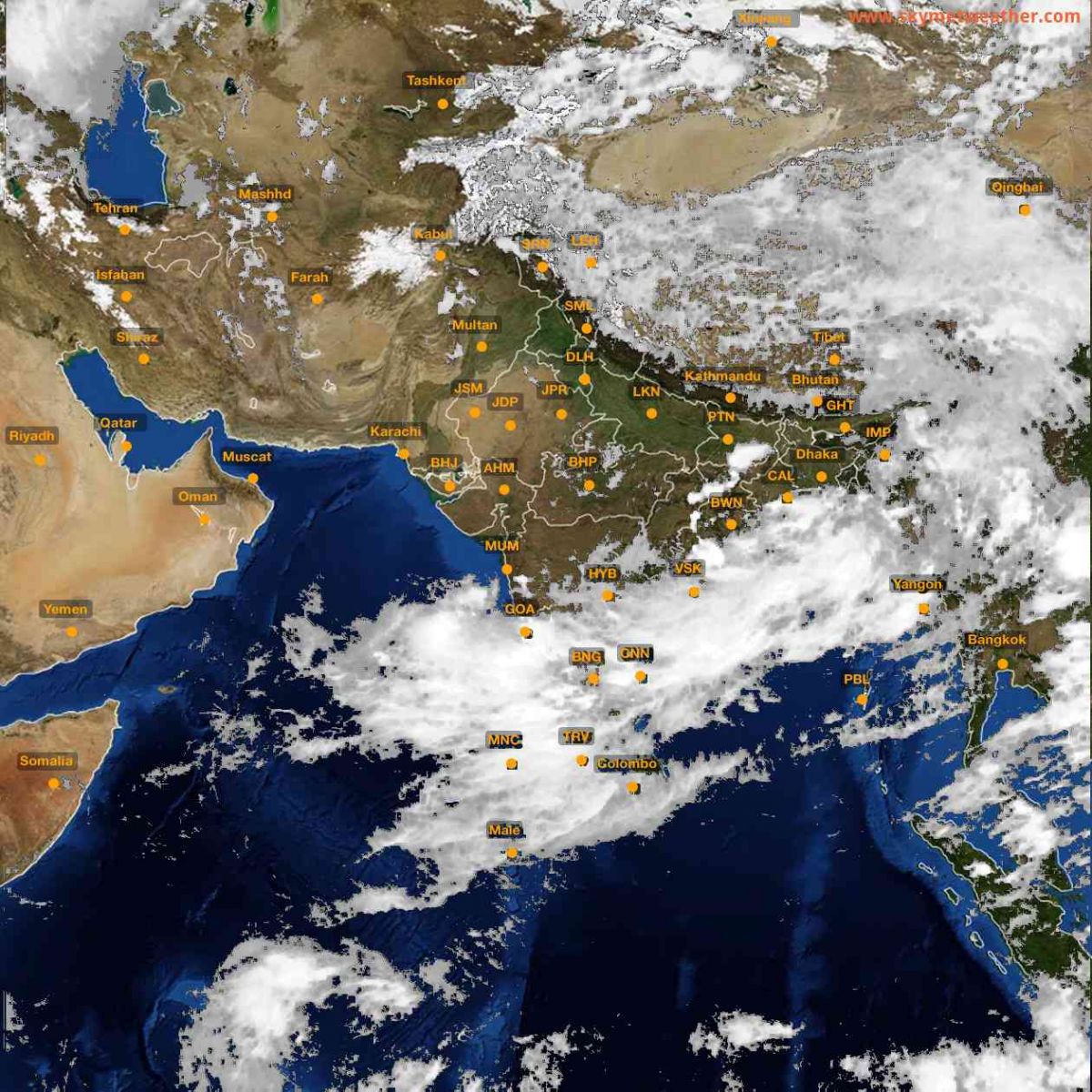Southwest Monsoon finally kicks in, heavy rainfalls reported in parts of India

The Southwest Monsoon finally kicked in, after seven days of delay, India Meteorological Department (IMD) announced on June 8, 2016. The weather system has advanced into most of Tamil Nadu, parts of south Karnataka and the south Bay of Bengal. The country's rainy season has now officially begun, and heavy rainfall already caused one death, due to a landslide in Idukki, Kerala.
The IMD needs to honor three parameters to officially declare the monsoon onset. Widespread rainfall lasted throughout the last 48 hours, and over 60% of 14 stations in charge of monitoring the monsoon recorded precipitation. Also, westerly and southwesterly winds with speed between 30 and 40 km/h (18.6 and 24.8 mph) were reported up to 600 hPa or 4.5 km (2.8 miles) over the south Arabian Sea. On June 8, the INSAT-3D satellite observed Outgoing Longwave Radiation lower than 200 W per square meter.

Image credit: Skymetweather.com
"All these three conditions got fulfilled for the first time today, June 8 since the monitoring was started by IMD from May 10. As a result, the Southwest Monsoon has set in over Kerala, today, the 8th June 2016. The Southwest Monsoon has further advanced into remaining parts of south Arabian Sea, Maldives Comorin area, most parts of Kerala and Tamil Nadu, some parts of south interior Karnataka, remaining parts of south Bay of Bengal and some more parts of central Bay of Bengal," the IMD stated.
Good News -Southwest Monsoon has arrived over Kerala today as correctly predicted by IMD.Congratulations scientists pic.twitter.com/xHr2zBYno8
— Dr. Harsh Vardhan (@drharshvardhan) June 8, 2016
According to SkymetWeather, Kerala and Coastal Karnataka experienced torrential downpours over the last 24 hours. Some areas reported extremely heavy rainfalls, and Alappuzha recorded 150.8 mm (5.9 inches). At the same time, 125 mm (4.9 inches) was observed in Punalur, 80 mm (3.1 inches) in Kottayam, 72.6 mm (2.8 inches) in Kannur while 71.8 mm (2.8 inches) was reported in Thiruvananthapuram and 66 mm (2.6 inches) in Kollam.
Intense rainfalls were greatly enhanced by a combination of two cyclonic circulations. One circulation persists in the Arabian sea off the Coastal Karnataka while the other is situated over the Coastal Andhra Pradesh. The existence of two circulations in such close proximity causes the Monsoon surge to strengthen over the region, Skymet experts explained.

Video credit: Puthiya Thalaimurai TV


Video credit: Puthiya Thalaimurai TV
Usual monsoon onset date is June 1, and the affected regions will likely experience above normal rainfall, following two consecutive seasons of weak monsoons. During the 2015 season, the monsoon deficiency was 14%. Northwest India reported a deficiency of 17%, Central India 60%, Southern Peninsula 15%, and East and Northeast India 8%, while the monsoon deficiency was 12.3% of the LPA in the 2014 season.
India's agricultural sector which provides employment for 60% of the population is strongly dependent on monsoon seasons, as only 40% of the land gets irrigated.
Featured image credit: Puthiya Thalaimurai TV

Commenting rules and guidelines
We value the thoughts and opinions of our readers and welcome healthy discussions on our website. In order to maintain a respectful and positive community, we ask that all commenters follow these rules:
We reserve the right to remove any comments that violate these rules. By commenting on our website, you agree to abide by these guidelines. Thank you for helping to create a positive and welcoming environment for all.